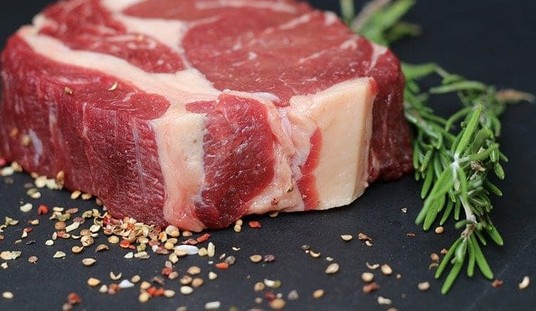Yeah, okay, I know. Yes, we still have tons of interviews. And this is not Friday.
The explanation for its being Sunday (and no, it’s not Friday somewhere) is that I – Sarah – have managed to catch a double ear infection which made impossible for me to write coherently. (Oh, you’re a card. Charlie, please find the young man who made that joke and give him an exploding cigar.)
Anyway, I thought we’d take a break from the interviews to talk blurbs. Every time I link books for our book plug I come across blurbs that make me want to crawl away backward.
I am not the expert on blurbs among my group, but I can give you some clues about what to do and what not to do. Because some of these blurbs are so bad anything will improve them.
Let’s start by establishing what a blurb is. Recently I’ve seen it used in two senses: the blurb at the back of a book, aka the “book description” and a line or more given by a more published/better known writer that helps “push” your book, or at least get their fans to look at it.
One is not the other, and shouldn’t be confused with the other (yes, I’ve seen that.)
If you want to have a better selling writer blurb your book, do so. Just make sure they’re better selling, and that they have time to read your book/it’s the type of thing they read. For instance, people keep asking me to blurb horror. I will not blurb horror, because I don’t read or like horror. The closest I come is dark fantasy, and yes, there is a difference.
If you have one or two lines from better-selling authors, put them after your description of your book. Do not have entire paragraphs. No one will read them. If the better selling author gives you something like “I love Mary Jones’ book. Her writing thrills me, transports me, makes me want to marry her on a sunny slope on Christmas day.” Cut it down to “[Mary Jones]’s writing thrills me, transports me.”
Now your blurb, also known as your “description” of the book. I keep finding these in two modes. The first is “this is a book. Read it” or more often (using Jane Austen’s Pride and Prejudice as an example “This book is about an upper-class woman falling in love with an upper-class guy, with a lot of misunderstandings and pride.” I’ve been guilty (as charged) of this type of blurb. It usually happens when I’m re-releasing a book I wrote ten or twelve years ago, and whose rights just reverted. I can’t even remember the nuances, much less figure out which will appeal to readers. Yeah, I know, I have a backlog of re-reading of my own stuff, though. If you find yourself doing this and it’s not a re-release, you’re probably exhausted. In either case, ask your beta readers to give you the high points about the book. Then do a blurb.
The second mode of blurb gets lost in the weeds. Let’s do Pride and Prejudice again: “There is this family with five daughters, and the father is really sarcastic and hides in his library, and the mother is not very bright. They have five daughters and their fortune is entailed away from the female side, so when the father dies, the mother and daughters won’t have any money. So when a rich man comes to town, the mother wants the father to go call on him, so he can introduce his daughters. The rumor is that this guy is bringing a group of ladies and gentlemen to the small town where this family lives, but there are only four people with him, his best friend who is richer than he is, and his married sister and her husband, and his unmarried sister who will keep house for him.
His friend and sisters are very snooty, and the second daughter who is witty doesn’t like them, and….” All the way through to Lydia’s elopement and the rescue and and and and…
Anyone sane lost interest in the first paragraph, because there is no coherent “feel” to the book, nothing to indicate what it’s about – really – and no character to attach to and be interested in.
The worst blurbs of this kind give away every twist and the ending too.
The really bad ones WAY overestimate the sexiness/offensiveness/controversial nature of the book, and actively discourage the readers. So, for P & P, you’ll have something like “Warning: there is a sexual situation when Lydia elopes with Mr. Whickam” (more on that later.) Or “Warning: there is a strong woman character, which will be controversial.”
Okay, so, how do you not do that?
First, understand what a blurb is. A blurb is a selling tool.
I have a lousy memory and I’ve not put a book up in months, so I don’t remember what Amazon calls the field. It might very well call it “Description.” Or something of the sort.
Ignore that. No one really wants you to describe your book. Readers who intend to read it want to be teased into picking it up. Readers who aren’t interested aren’t going to pick it up because you gave an 800-word description, with many warnings about what might offend them.
A blurb is a selling tool. Its purpose is to make the reader want to read/buy the book. Pretend you were given free ad space (you were. It’s called your book page on Amazon.)
Your first selling tool is your cover, which must both look interesting enough and signal genre enough in the thumbnail that people want to click on it and see the rest. (Yes, it is PROBABLY time for another cover clinic, because covers have changed SO MUCH in recent times. Even indie is far more professional now, and what passed three years ago won’t now.)
Let’s just say that if you have to settle for one thing with covers, either being attractive or signaling genre, go with signaling genre. When looking at thumbnails for, say, science fiction, I’m more likely to click on generic planets with spaceship than on beautifully rendered woman’s face. Also, ignore things like hair color and “is this a scene from the book.” Most scenes from the book are too detailed/confusing to fit in a cover. Also no one cares. Before reading the book, people don’t know if it’s a scene. After reading the book, they either like it or not, and the cover no longer matters. Yes, you’ll get the occasional obsessive telling you the character’s hair color is wrong. Ignore that.
Anyway, so now the reader has clicked on your cover, and you have a paragraph to sell them the book. If he has to click read more to be sold on it, you might lose him. Use the “read more” for those bigger author reviews that give the reader the chance to confirm that indeed they want to read your book.
I just looked at blurbs for Pride and Prejudice, but they all rely on the fact this is a classic to sell it, which means none of them tries to be particularly enticing.
So, let’s start with who is the real hero/heroine of the story: Elizabeth Bennet.
Elizabeth Bennet wishes for the deepest love to entice her into marriage. Unfortunately for her, chances of such a passion are poor. The second of five daughters of small gentry in a village of no consequence, she has little but her charms to recommend her. Worse, when Mr. Darcy, a rich and powerful man comes to town, Elizabeth dislikes him at first sight.
Can she overcome her prejudices while he overcomes his Pride to find true love? One thing is for sure, her dimwitted mother, sarcastic father and unruly sisters will not help Elizabeth attain her heart’s desire.
Yes, I do know it’s not amazing prose. Look, I’m crawling my way back from an ear infection. Normally this would undergo several iterations before I was happy.
Instead, let’s give you a few rules to help refine the blurb:
- Start with the character that matters.
- Tell us the character’s want/objective
- Tell us the obstacle
- Do not name more than two or three characters.
- Avoid passive voice.
- Do not tell us the twists or the end.
There are a lot more refinements, like using the description to use a keyword/genre that is not in the choices. It helps the Amazon bots sell your books.
But if you just follow the rules above, your blurb won’t be as bad as most of them seem to be.
There are also differences in genre. For instance, mystery blurbs seem to be longer than others.
The best advice is that you read a lot of blurbs in your genre and subgenre before you write yours. Trust me, it will help.
You’ve never seen an alien like her.
When she arrives on earth with a whisper, mute and nude, she becomes the objective of a battle to possess the most sexually alluring woman any man has ever seen. Every man who comes in contact with her must fight to keep her, especially once the government launches a series of raids to seize every alien they can find.
But Professor Dwight Lansing knows that the alien female is not alone, and that someone terrifying is coming to earth to claim her.
 FROM DANIEL FOTY: The Rise and Fall of Classical Athens: A Short History
FROM DANIEL FOTY: The Rise and Fall of Classical Athens: A Short History
Athens of the 6th – 4th centuries B.C. has become a byword for knowledge, learning, and high culture.. But the most important and consequential innovation produced by Classical-era Athens was the concept of democracy – of governance based on an assembly where citizens would debate and vote. This combination of liberty and responsibility gave Athens great strength and great civic vitality – and made Athens the richest and most powerful city-state in the classical Greek world. But without institutional constraints (and often devoid of self-discipline), that democracy was prone to demagoguery, excessive emotional irrationalities, and mercurial inconsistencies – which eventually caused Athens to self-destructive. Based largely on contemporary and near-contemporary sources – Herodotus, Thucydides, Xenophon, and Plutarch – in this short book Daniel Foty weaves these sources together into a narrative that is seamless – as well as crisp and succinct. Engaging and very readable, this story takes the reader through the turbulent history (and associated personalities) of classical-era Athens – its early and semi-mythical origins, its rise to model city-state greatness, its self-destructive fall from that greatness, and its ultimate submersion into irrelevance as the Classical era was succeeded by the Hellenistic era. Written for the general reader, the story of classical Athens is told here anew – demonstrating that this story is never outdated and never irrelevant.
 FROM TAYLOR CARMICHAEL: Whodidit in the Supreme Court?
FROM TAYLOR CARMICHAEL: Whodidit in the Supreme Court?
Officers with the Supreme Court police discover a shocking crime–an anonymous person has smuggled a dead baby into the Supreme Court building. The tiny corpse is found inside the courtroom itself, up on the dais, right in front of chair #4. A mob of federal police investigates the break-in, including agents of the FBI, the Secret Service, and the Supreme Court police. But it falls on Detective Sergeant Saxon of D.C. Homicide to find the killer.
 FROM SIGNE KOPPS: Queen of Incense
FROM SIGNE KOPPS: Queen of Incense
Who was the Queen of Sheba? 3,000 years ago she traveled across the Arabian Desert carrying a magnificent treasure in gold and frankincense to King Solomon in Jerusalem. Her legendary visit with the king has been portrayed in books, paintings symphonies, movies, and religious texts, yet there’s no evidence that she actually existed.
Perhaps she did, and perhaps this is her story.










Join the conversation as a VIP Member